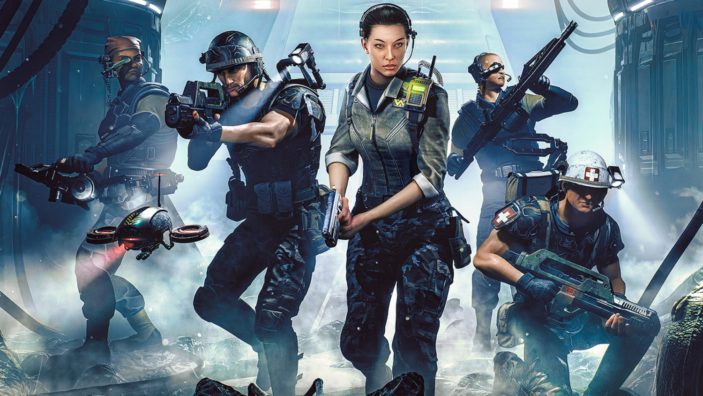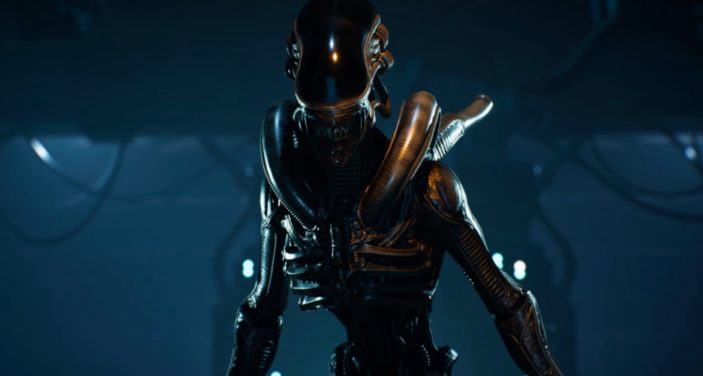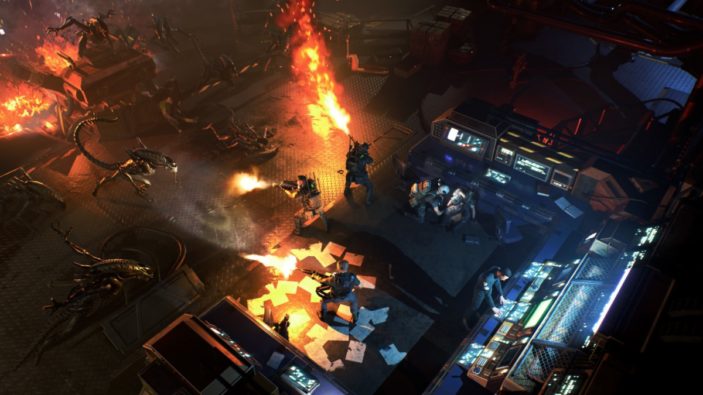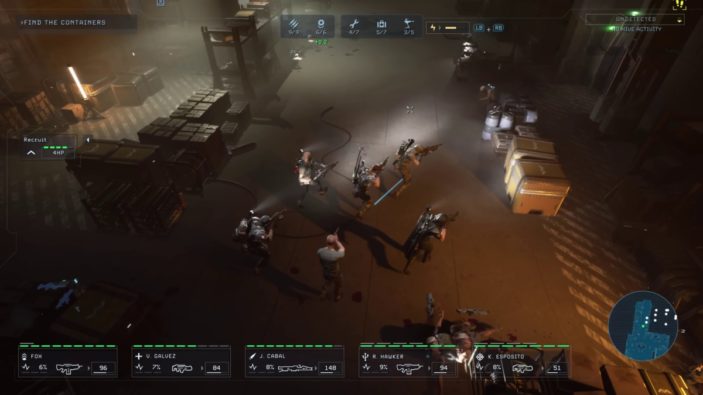
I’m a massive fan of the Alien franchise. So much so, that Aliens still sits well within my top ten films of all time. Yes, there’s a list, but let’s put that aside for now. Aliens: Dark Descent is yet another attempt to bring validity and ultimately justice to the long-running franchise in video game form. While Dark Descent has a fair bit going for it in terms of atmospheric tension and an intriguing narrative, it ultimately drops the ball with some annoying bugs and uneven gameplay.
Game Over Man! Game Over!
Set in the year 2198, 19 years after the events of the original Alien trilogy, players initially take control of Weyland-Yutani Deputy Administrator Maeko Hayes aboard the USCM vessel USS Otago. A mysterious package arrives on board, which is immediately revealed to be a living Xenomorph, which breaks out and wreaks havoc on the crew. If that wasn’t bad enough, you’re headed for a crash landing, where our journey to find the source of these unanswered Xenomorph deliveries sets our narrative in motion, as we explore unique planets and facilities for the truth.
There’s an interesting story at the centre of Aliens: Dark Descent and it’s clearly taking inspiration from the films. It’s also morally challenging, thanks to a blistering introduction in which brutal decisions made out of necessity soon backfire; but too often does it take a backseat to gameplay. The cutscenes revolving around some of the game’s protagonists are poorly lip-synced, but interesting enough, even if the emotional resonance barely bleeds into its mission structure.

Aliens: Dark Descent’s atmosphere is drenched in foreboding tension. It mimics the feeling of the unknown that the films did so well. The game is played from an isometric perspective and is limited to what the characters can see. While this feels a little weird initially, the surrounding darkness of nearby corridors and locked rooms certainly work their magic. The classic sound of the radar also returns, as your squad tracks the beeping of enemies as they near ever closer. There’s certainly an argument to be made that the randomly generated and smaller moments that come from you peeking around dark corridors and immediately finding yourself in hot water are the most enjoyable.
They Mostly Come Out at Night… Mostly
You’ll spend your time taking a squad of up to five troops through various abandoned facilities, usually either in search of survivors or to clear our Xenomorph nests. Controlling a moving cursor, you can select where the squad moves to, while they attack oncoming enemies automatically. Certain squad members can be specifically selected to utilise a range of special abilities, like a shotgun blast, grenade launcher, sentry turret or even directed suppressing fire. While there are certainly various ways to tackle combat, I also wish that encounters early on were more frequent. It certainly builds as it progresses, but I found myself in the early hours of Aliens: Dark Descent preparing my squad for battles that never came to fruition.
Selecting and using your abilities either slows or pauses the experience depending on your preferred settings. It’s worth noting here that I found slowing the experience kept much of the tension as it constantly prompted my actions. While you can move to certain points, double-clicking the move button will cause teammates to run, in which they cannot attack. I can certainly appreciate the constant level of nuanced decision-making, as most encounters rarely go smoothly. A single Xenomorph usually does damage unless spotted early, while close encounters damage squads with a shower of acidic blood. Xenomorphs also naturally call upon their hive when attacked, meaning most encounters are followed with additional resistance unless tackled immediately.

Aliens: Dark Descent does at times allow for stealth, so as to not alert the larger hives. That being said, I felt that the experience constantly threw me in hot water on purpose, with wonky AI marines that fail to keep as quiet as you need them to. On a couple of occasions, I had guided my squad through a corridor, only to spot a nearby Xenomorph on the radar. As we cowered in a nearby room due to our high hive level, it was only until the last minute that I realised one of my squad mates had gotten stuck down the corridor behind a computer console. As they eventually freed themselves and made their way to my requested rendezvous point, it was already too late. They had been spotted, and it was now up to me to face off against an angry hive with my back against the wall.
It made for an incredibly cinematic and tense moment, but I also felt that the AI put me in these positions more than I would have liked, which made many of my mistakes feel cheap and frustrating. It also doesn’t help that stressful situations mess with squad tendencies, causing them to miss critical shots and ignore commands when their stress level gets too high. I also encountered a couple of missions that simply forced me to restart, as important prompts failed to present themselves.
Early on, I was tasked with rescuing the remaining survivors within a particular facility. I had rescued the final survivor, but the mission had seemingly forgotten to tell me what to do next. I wondered aimlessly for what seemed like an hour before I restarted the mission just to see if I had missed something. But upon rescuing the last survivor again, the game prompted me to exit the facility, which I did in a matter of minutes.
The Way Forward
When you’re not leading squads through abandoned facilities, you take control of Hayes as she manages the USS Otago. Here, you’ll be able to upgrade various departments like the research and medical facilities, along with new equipment, which can then be applied in the form of shiny new upgrades and abilities.

Each marine carries its own unique class and set of statistics, but there are only a few you should focus on, like your bravery, which keeps that stress level down in combat. As the game operates on a daily cycle in which the level of Xenomorphs and the likelihood of dangerous encounters increases, you’ll also need to keep on top of these upgrades after each mission.
It’s also worth noting here that Aliens: Dark Descent looks great at times, and captures the look and feel of Aliens with some excellent set designs and impressive lighting. I personally love the way your flashlight creeps through gaps in the hallways, revealing the path ahead. The sound design is also fantastic, complete with that classic pulse rifle blast and various horrific Xenomorph screeches.
Final Thoughts
There’s a great RTS tucked away at the core of Aliens: Dark Descent. Its unique RTS approach allows for a range of encounters, and the sense of atmosphere and stunning sound design certainly do their best to place you within James Cameron’s Aliens film.
But due to wonky AI and strange gameplay bugs, it can all feel a little inconsistent. For as interesting as the narrative is at times, it also never seems to tie efficiently into gameplay with confidence and grace. I would certainly recommend Aliens: Dark Descent to fans of the franchise for its authenticity alone, but I’m not really sure if general RTS fans will get the kick they crave.
THREE STARS (OUT OF FIVE)
Highlights: Intriguing narrative; Foreboding atmosphere; Constant feeling of tension and dread
Lowlights: Wonky AI; Annoying gameplay bugs
Developer: Tindalos Interactive
Publisher: Focus Entertainment
Platforms: PlayStation 5, PlayStation 4, Xbox Series X/S, Xbox One, Windows PC
Available: Now
Review conducted on PC via Steam with a pre-release code provided by the publisher.
